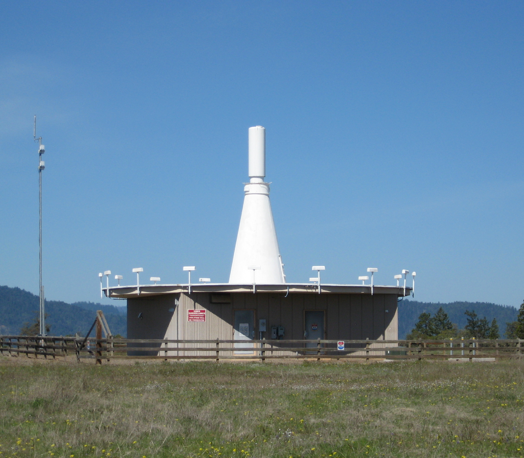Note
You may notice (yet, again) a facelift on my blog site today! I build this blog using some nice open-source tools, and they updated several of the parts I use. So, I went looking at several sites for examples of the way they laid things out, and settled on this one for a while. Plus it now shows my favorite airplane, and the one I probably owe my career to. So here it is! As a bonus, I have my commenting system back up, so you can comment on any post if you like it, or hate it, or just want me to say something else (or nothing else!) HA! Good luck on that last idea.
Pilots love to sit around and tell tall tales of their flying experiences. I guess I am no exception, so here are a few more of my flying tales.
Solo
There is no need to tell this tale, I told it already! Check out Solo:
Learning the Controls
Airplanes are not like cars. Basically all you need to do in a car is keep the critter between the lines painted on the road, obey the signs, and occasionally figure out how to make it go forward or backward. Simple stuff a 9th grader can do in his grandfather's pickup truck while trying to hit all the cow-pies in a big pasture!
Airplanes are different! Very different.
Doing three things at Once
Basically, you still need to focus on similar things, but the big new one is keeping the craft right-side up, and straight and level. For a beginner, that can be a challenge.
First, you have to get used to all the instruments that tell you which way you are flying, and how the airplane is oriented relative to the ground, even in the middle of a cloud or at night. The front panel is a bit more complicated than the average car:
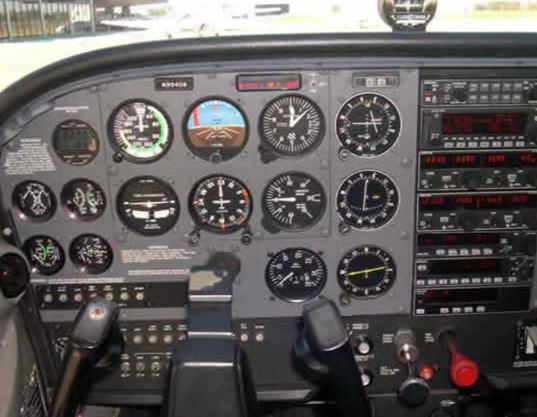
It is a bit different jumping out of one airplane and into another. All those instruments might be in different places in the second one, and you need to learn where everything is, because they are all important in some way, and you monitor them all as you fly.
You have three different kinds of controls to worry about. For the kind of plane I started learning how to fly, I sat in the pilot's seat with a wheel (they called it a yoke, because it was not really the same as in a car) in front, and two pedals under my feet, that you could push back and forth.
They did this:
Pitch
- Pull the wheel back, the nose of the craft goes up.
- Push the wheel in, the nose goes down!
Roll
- Turn the wheel to the left, the right wing goes up, the left wing goes down.
- turn the wheel to the right, the left wing goes up, the right wing goes down
Yaw (no, not yawn!)
- Push the right rudder pedal, the nose goes to the right
- Push the left rudder pedal, the nose goes to the left
Sounds simple enough, but the trick is making the plane go where you want it to go by making movements (usually small, unless you are doing aerobatics) in all three directions at the same time. With practice (a lot of practice) you stop thinking about it and it just happens. Magic!
But getting there takes time. My favorite practice was:
Ss Along a Road
Practice sessions usually involved flying from Wright-Patterson Air Force Base over Xenia, Ohio (site of a horrible tornado in 1974), then down into the farmlands south of that town. We would hunt up a long straight road and fly straight toward the road. As you passed over the road, you picked out a telephone pole, or some other stationary object, and used that point as the center of a circular path you made the plane fly as you turned the craft 180 degrees in whichever direction you started turning. The trick was to make the tip of the wing look like it was attached to the object you were using as a reference point. When you reached the road again, you switched your focus to a spot on the other side of the airplane and did the same thing, only this time turning in the opposite direction. The result is that you flew a big "S" (quit giggling) turn in the sky. Usually you kept doing that until the road ran out.
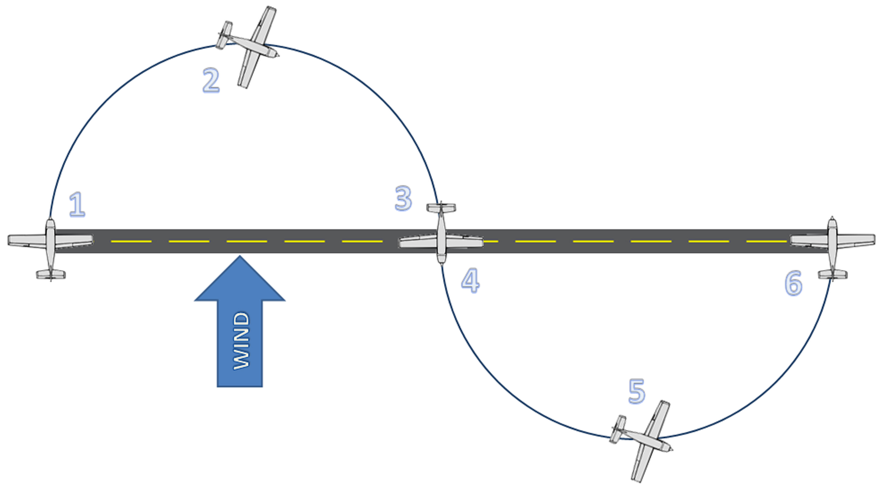
This gave you a lot of practice using all the controls to fly a smooth "coordinated" path through the sky. You also had to keep your eyes sharp to make sure you did not run into some other silly goof doing the same thing in the opposite direction.
Flying well with all three sets of controls is difficult to do right, and you have to keep practicing it to keep good at it. I learned how much I forgot after not flying for quite a while when I checked out in a Grob Sailplane (glider) a few years back. See I Hate String
Touch and Go
Another fun session involved just flying around an airport, practicing take-off and landing. You had to line the airplane up at the end of the runway, push in the throttle (which you did with your hand, not your foot), and keep the plane moving straight down the runway until it was going fast enough to lift off. Sounds simple, but it gets involved.
Usually, you accelerate a bit, then pull back slightly on the wheel to try to lift the nose up. It will not do so until it gets to a certain speed. Then you let off slightly and allow the plane to get light on its wheels, and eventually it lifts off and you are flying. Then you have to keep the speed of the plane under control as you focus on climbing away from the ground. All too soon, you make a turn and start flying the "traffic pattern", a circuit around the field whose direction depends on the wind, and eventually you end up turning back towards the same runway and the goal is to land the plane again.
This involves slowing down, usually using something called "flaps", which are big panels at the back of the wings that move downwards increasing lift, and decreasing speed (all of which means you keep flying, only slower). You focus on lining the airplane up with the centerline of the runway, and keep the plane slowly settling toward the pavement (or grass, it all depends on the airport). As you get just above the ground, you pull the nose up slightly, cut the power, and let gravity bring you back to Mother Earth, hopefully with only the slightest bump as the wheels touch down.
When flying "touch and goes", as soon as the plane is fully under control on the ground, you push the throttle in and take right back off and do it all over again. It is this kind of practice that makes you good.
Any time I fly commercially, I always pay attention to how slight the bump is when that huge airliner hits the runway. If the pilot does it well, I make a point to congratulate him/her on a "nice landing". Trust me, they appreciate that! They also deserve it. Landings are one of the more difficult parts of flying to do well.
Why are Landings Hard?
Well, we do not want to land hard, that much is obvious. What make them hard to master is the part I left out in that bit above. The wind is usually blowing, and never straight down the runway, it seems. That makes every part of the take-off/landing exercise tough, because now you have to figure out how to do all those things while the plane basically wants to fly sideways with the wind. You are forced to do some unnatural things. Here is a picture of an airliner doing something called "side-slipping" just before landing in a strong cross-wind:
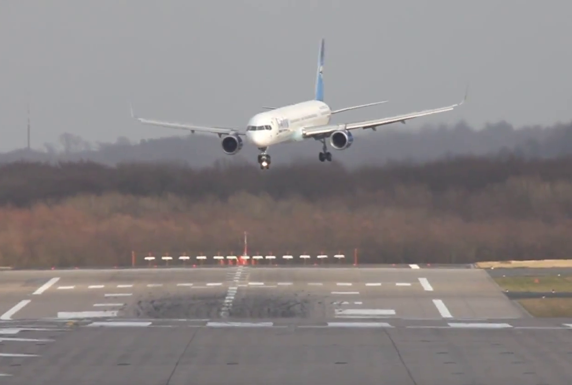
He is not flying across the runway, he is moving straight down that centerline on the pavement. The trick is to fly with one wing low, while trying to make the ground path line up with the runway. At the last possible moment, you use the rudders to straighten the plane out as you let one wheel touch the ground, then work harder to straighten the craft out as you put the other two down so you roll straight down the runway. That is harder to do than it is to explain.
I got pretty good at this, and used to go up on windy days, just to practice this kind of flying!
Watching Landings
The Base Aero Club at Wright-Patterson AFB was housed in an old alert hanger, set up during the cold war so they could launch fighters quickly if needed. The cool thing about that place was a nice observation bay that had a great view of the approach to the end of the runway. As all pilots are prone to do, we used to sit there and grade the landings each pilot made at the field, and there were a lot of them.
We had small ones
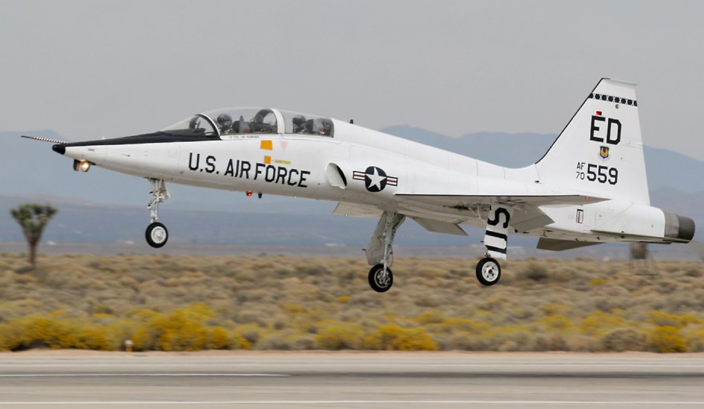
This is a T-38, used to train fighter pilots. NASA uses a bunch of them to train astronauts as well.
We had big ones
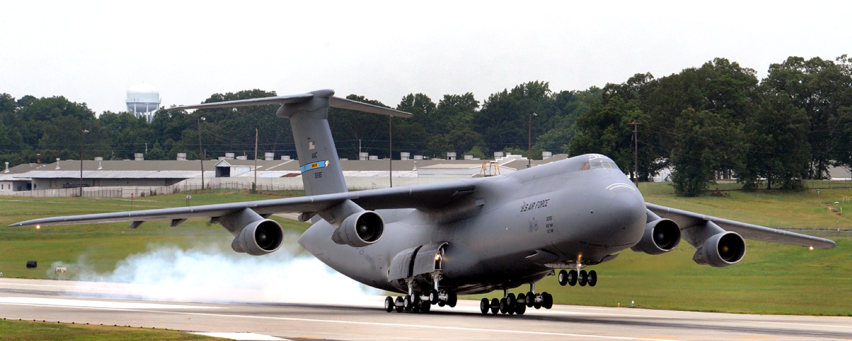
This is a C5 transport, the biggest airplane in the USAF fleet!
We had bombers
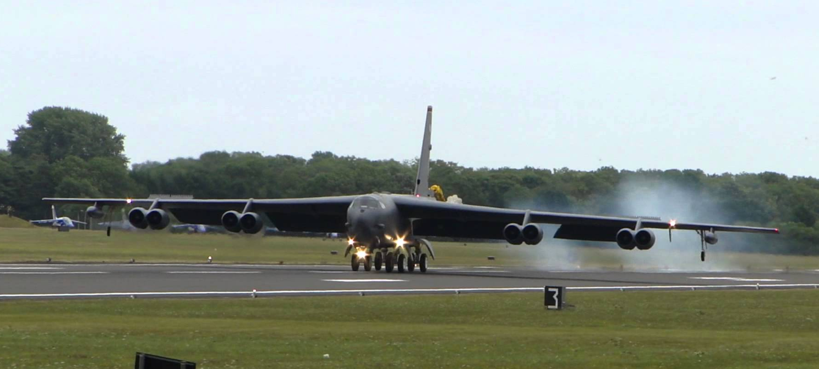
We had weird ones
But by far the most fun was watching a Harrier land. These things do not really land. They make the approach to the runway, then screech to a halt about 20 feet in the air, then hover like a helicopter for a while making a TON of noise. Then they motor along above the ground to where they want to park the thing, and gently touch down. It was fun to watch:
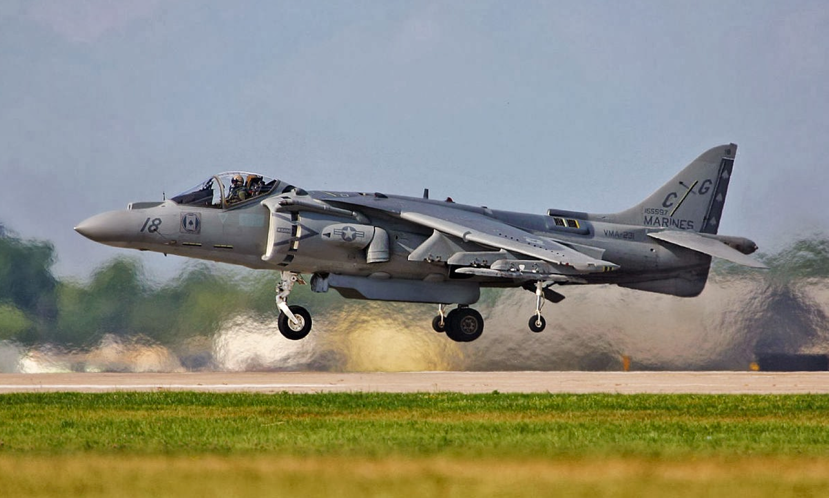
720 Degree Turns
Another fun maneuver was flying a tight level circle in the sky, usually with the wings up at a 60 degree angle from level (pretty steep). This makes you feel about twice as heavy as normal, since it is a "2-G" maneuver. You only fly this way when you need to turn in a hurry!
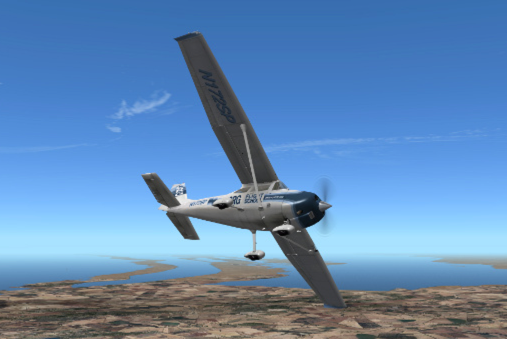
Flying this involves paying attention to a lot of things to keep the altitude constant, and the "bank angle" (the tilt of the wings) constant as well. What made it interesting was what happened when you finished the first 360 degrees of the maneuver.
At the tip of a wing, the air essentially spills from the bottom side where the pressure is high (from generating lift), to the top side, where the pressure is low (actually "sucking" the wing upward, also part of generating lift). The result is a horizontal tornado called a "tip vortex" that can spin away for several minutes in the sky. It is invisible, but when you hit it, as you will after that first 360 degrees of turn if you do this right, the vortex wants to make the plane either tilt more, or less depending on which way you are turning. That disturbance can continue as you fly through that weird vortex sitting in the sky all around that second turn. Boy, do you have to work to keep the plane where it is supposed to be during that second 360 degree turn!
Vortex Theory
I actually had to study all this in my aeronautical engineering classes as school.
A tip vortex is what spun a training flight upside down while a student was trying to land one day, and convinced me that I needed to learn aerobatics before I quit this learning stuff (I never have quit learning, by the way).
Horizontal Tornadoes
One hot summer day in Albuquerque, I was jogging along the runway at the ABQ airport (where my office was) and a big airliner flew past me just before touching down. Albuquerque is pretty dusty, since there is nothing but desert around, so a huge tip vortex from that plane spun off of the wings, settled down on the ground and washed over me as I was jogging. It felt like a small tornado, with a ton of dust that stung my eyes to the point where I had to stop and let it blow by! Wild to feel that!
Here is a really good look at one of these, being generated by an F16 fighter jet:
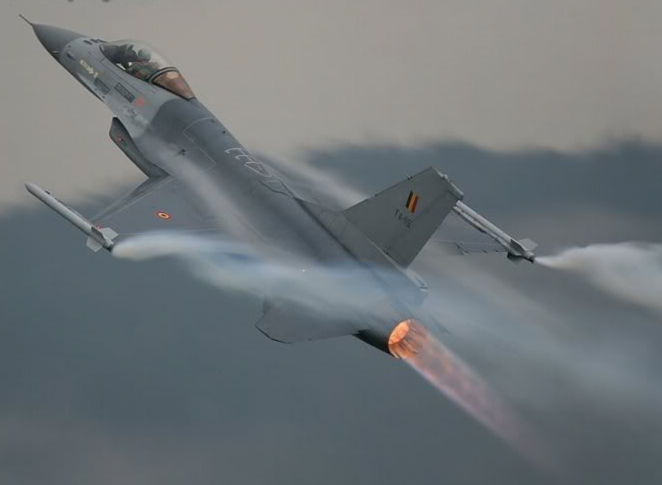
Emergency Landings
Unlike in driving, if you have problems, you cannot just pull over and call AAA. You have to find a place to land and do so without killing yourself.
When I took the check ride with an FAA examiner who was going to issue my Commercial Pilot's License that day, we were flying along and he reached over and yanked on the throttle control, essentially killing the power to the engine (it was idling). I went into emergency landing mode, and started looking for a field I thought I could put the plane down into, I spotted one, then went to work trying to get the plane down to the right altitude to get into that field. I got almost to the point of landing in the grass when the examiner put the power back in and said "That was pretty nice. I had an emergency last week, and put the plane down exactly in that field!" Boy was that a nice plus on that test!
Flying is in My Blood
I cannot fly now, at least the way I want to, all because of my battle with cancer. All of the drugs I have been on for so long makes the FAA worried about my ability to do all of the things needed to fly, so I sit on the ground looking up as I did as a kid way back when. I can do battle with them and prove that all the weird chemicals are gone, but that takes time I do not seem to have now. So all I am doing now is waiting for that durned J-79 turbojet engine to get back to Houston, so I can take my ride in the F4D. Until that day, I guess I will just remember the moments!
Comments
There are no comments yet.
